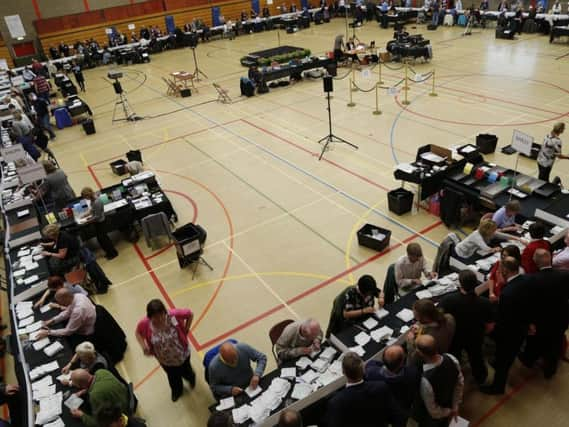Boundary changes: How Calderdale's political map could be redrawn


The Boundary Commission for England has issued its last recommendations for a shake-up designed to ensure population sizes represented by the borough's are roughly equal – part of a national review ordered in 2011 that began in earnest two years ago.
Advertisement
Hide AdAdvertisement
Hide AdIn Calderdale, the two constituencies will be made up of different wards from the current Calder Valley and Halifax constituencies.
However the initial names of Upper Calder and Lower Calder constituencies was met with opposition. They have now been renamed Halifax and North Calderdale, and South Calderdale and Queensbury
Nationally, Labour has opposed the changes, which would come into force at the next election in 2022. Overall, the number of seats in the House of Commons would drop from 650 to 600; Jeremy Corbyn’s Islington North seat would go, as would former Brexit secretary David Davis’ constituency of Haltemprice and Howden.
The commission said more than 35,000 comments from the public were taken into account ahead of its final report.
Advertisement
Hide AdAdvertisement
Hide AdSam Hartley, secretary to the commission, said: “We’re confident the map we propose is the best match of the legal rules Parliament has set us. It’s now up to Parliament to decide whether these boundaries will be used at the next general election.”
A date for when MPs will discuss the proposals, which need parliamentary approval, has yet to be fixed.
Meanwhile the Electoral Reform Society said the Commons’ capacity to provide independent scrutiny would suffer.
Darren Hughes, chief executive of the ERS, said: “Cutting the number of MPs with Brexit around the corner would be like a company laying off its staff having just secured a major new contract. Backbench scrutiny will be needed more than ever after we leave, making this cut hugely irresponsible.
Advertisement
Hide AdAdvertisement
Hide Ad“If the cut in the size of parliament is not matched by a cut in the size of the government, these changes would amount to an executive power grab, with the highest ever proportion of MPs duty-bound to vote with the government. Fewer backbench MPs means reduced scrutiny of government decisions.”
Constituencies currently vary in England from about 55,000 to 95,000 voters.
By law, every area the commission proposes must contain between 71,031 and 78,507 electors. The number of constituencies in Yorkshire and the Humber would reduce from 54 to 50. support any amendments to the Keighley, Huddersfield, and Dewsbury constituencies.